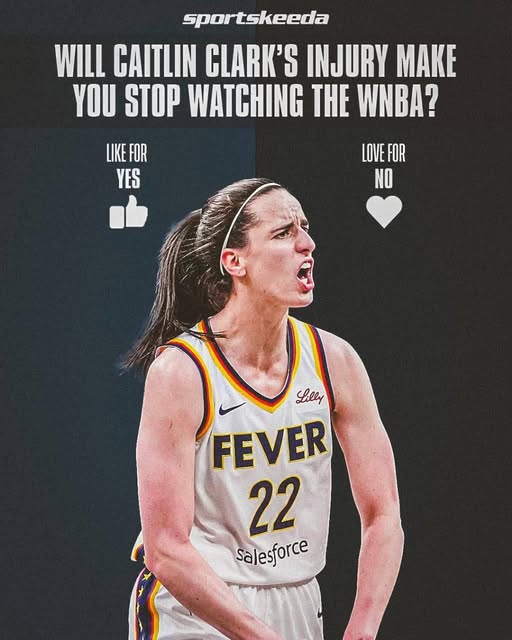With Breanna Stewart sidelined, the WNBA’s ratings momentum is at a crossroads, facing a serious test of its growing popularity and sustained viewership. Stewart, one of the league’s brightest stars and a face synonymous with excellence and competitive spirit, has been a driving force behind the WNBA’s recent surge in visibility and interest. Her absence, due to injury, leaves a palpable void not just on the court but in the eyes of fans and broadcasters alike. As the league navigates this challenge, it must grapple with questions about its ability to maintain the attention it has so carefully built over recent seasons.
The WNBA has experienced a notable upswing in ratings and cultural relevance over the past few years. This progress is attributable to a blend of compelling storylines, high-caliber talent, and the league’s commitment to social justice and community engagement. Fans have connected with players not only as athletes but as outspoken advocates and role models, creating a deeper sense of loyalty and investment in the league’s success. The emergence of young stars and the consistent performances of veteran players have further fueled this momentum, drawing in both longtime basketball enthusiasts and new audiences. However, with key figures like Stewart out of the picture, the league now faces the challenge of proving that its appeal is broad-based and resilient.
Stewart’s impact on and off the court cannot be overstated. As a multiple-time MVP and Olympic gold medalist, she represents the pinnacle of athletic achievement in women’s basketball. Her style of play, combining finesse, strength, and basketball IQ, has captivated audiences and inspired a generation of players. More than that, Stewart’s personal story, marked by perseverance and a commitment to excellence, resonates widely. When she is playing, the WNBA enjoys heightened media coverage, social media buzz, and, crucially, increased TV ratings. Broadcasters rely heavily on star power to attract viewers, and Stewart’s absence forces networks and league officials to rethink their strategies for promoting the games.
The absence of a marquee player like Stewart highlights a broader issue that the WNBA has wrestled with for years: the dependence on a handful of stars to carry the league’s visibility. While stars are essential in any professional sports league, over-reliance on a select few can expose vulnerabilities when those players are unavailable. This dynamic has been seen in other leagues as well but is especially pronounced in the WNBA due to its relatively smaller market size and budget constraints compared to male professional leagues. The challenge for the WNBA now is to showcase the depth of talent across all teams and to promote compelling narratives beyond the biggest names. Doing so can help sustain and grow viewership, even in the face of inevitable absences due to injury or personal reasons.
In addition to the challenge of star absences, the WNBA faces competition for attention from other professional sports leagues and entertainment options. The sports calendar is crowded, with major leagues like the NBA, MLB, and NHL often dominating mainstream sports coverage. Even within basketball, the NBA’s global appeal and financial muscle dwarf that of the WNBA, creating an uphill battle for broadcast slots, sponsorship dollars, and fan engagement. Maintaining momentum in ratings requires not only attracting casual viewers but also converting them into dedicated fans who tune in regularly, engage with content, and support the league financially. This is difficult to do when the visibility of marquee players diminishes, underscoring the importance of strategic marketing and grassroots outreach.
Another significant factor influencing the WNBA’s ratings is the quality and excitement of the games themselves. Fans tune in not only to see star players but also to witness competitive, high-energy basketball. The league’s efforts to improve parity among teams and create closer, more unpredictable contests have paid dividends in keeping viewers engaged. When the games are compelling, even the absence of a star player is less likely to result in steep ratings drops. The WNBA’s ongoing initiatives to enhance player development, coaching, and fan experience are therefore critical in mitigating the impact of key player absences. By promoting the overall quality of play and spotlighting emerging talent, the league can sustain interest and viewership despite temporary setbacks.
The role of media partnerships and broadcast strategies cannot be overlooked in this context. The WNBA has made significant strides in securing television and streaming deals that have expanded access to games. Networks have embraced digital platforms and social media to reach younger audiences and international viewers. However, the promotional focus often gravitates toward the biggest stars and marquee matchups, which leaves gaps when those stars are not available. To navigate the current challenge, broadcasters and the league must broaden their promotional scope and highlight the narratives and personalities across the entire league. Enhanced storytelling, player profiles, and behind-the-scenes content can help deepen fan connections and offset the impact of star absences on ratings.
The WNBA also has the unique opportunity to leverage its social justice activism and community involvement as a means to maintain and grow its fan base. Players and the league have been at the forefront of important social movements, which has resonated deeply with many viewers, particularly younger and more socially conscious audiences. This connection provides a layer of engagement beyond the basketball itself, creating a sense of shared values and purpose that can help sustain interest even when star athletes are sidelined. The league’s messaging and marketing efforts can build on this foundation to cultivate a loyal and diverse fan community that supports the WNBA through ups and downs.
Another dimension worth considering is the international appeal of the WNBA. With many players hailing from outside the United States and with the league expanding its digital reach globally, there is a growing potential audience beyond domestic borders. The absence of a star like Stewart, while significant domestically, may be mitigated somewhat by the global interest in the sport and the stories of international players. Strengthening international marketing efforts, creating accessible viewing options worldwide, and celebrating the multicultural makeup of the league can help sustain viewership and commercial opportunities.
That said, the immediate concern remains the domestic ratings performance. The WNBA’s recent gains have come at a crucial moment when women’s sports are experiencing a broader renaissance in media attention and public interest. Losing momentum now could stall progress and make it more difficult to secure lucrative broadcasting contracts and sponsorship deals in the future. The league’s leadership, therefore, must act decisively to adapt its marketing and engagement strategies, ensuring that the absence of a single star does not derail its overall growth trajectory.
Innovative approaches such as highlighting up-and-coming talent, creating themed events, and enhancing fan interaction through digital platforms could play a vital role in this effort. The WNBA’s social media presence, which has been a powerful tool for building community and sharing authentic player stories, should be leveraged even more aggressively. Moreover, collaborations with influencers, partnerships with youth sports organizations, and community outreach programs can help embed the league more deeply into the cultural fabric.
It is also critical to remember that star players, no matter how impactful, will inevitably face injuries or absences at times. The true test of a league’s strength lies in its ability to sustain interest and competitive excitement regardless of individual circumstances. The WNBA’s challenge with Stewart’s absence presents an opportunity to prove its resilience and the depth of its appeal. By focusing on the collective strength of the league, fostering a competitive balance, and investing in fan engagement strategies, the WNBA can continue its upward trajectory.
Ultimately, the WNBA’s future depends not only on the performance of its top stars but on the league’s ability to connect with fans on multiple levels—athletic, social, and cultural. Breanna Stewart’s absence is a significant setback, but it is also a moment to highlight the broader story of the league’s growth and potential. If the WNBA can maintain its ratings momentum through this test, it will demonstrate a maturation that bodes well for long-term sustainability and success. The coming months will reveal whether the league can translate its recent gains into a stable foundation that can weather the inevitable challenges ahead. The stakes are high, but the WNBA has the talent, the passion, and the platform to rise to the occasion and continue making strides in the world of professional sports.



